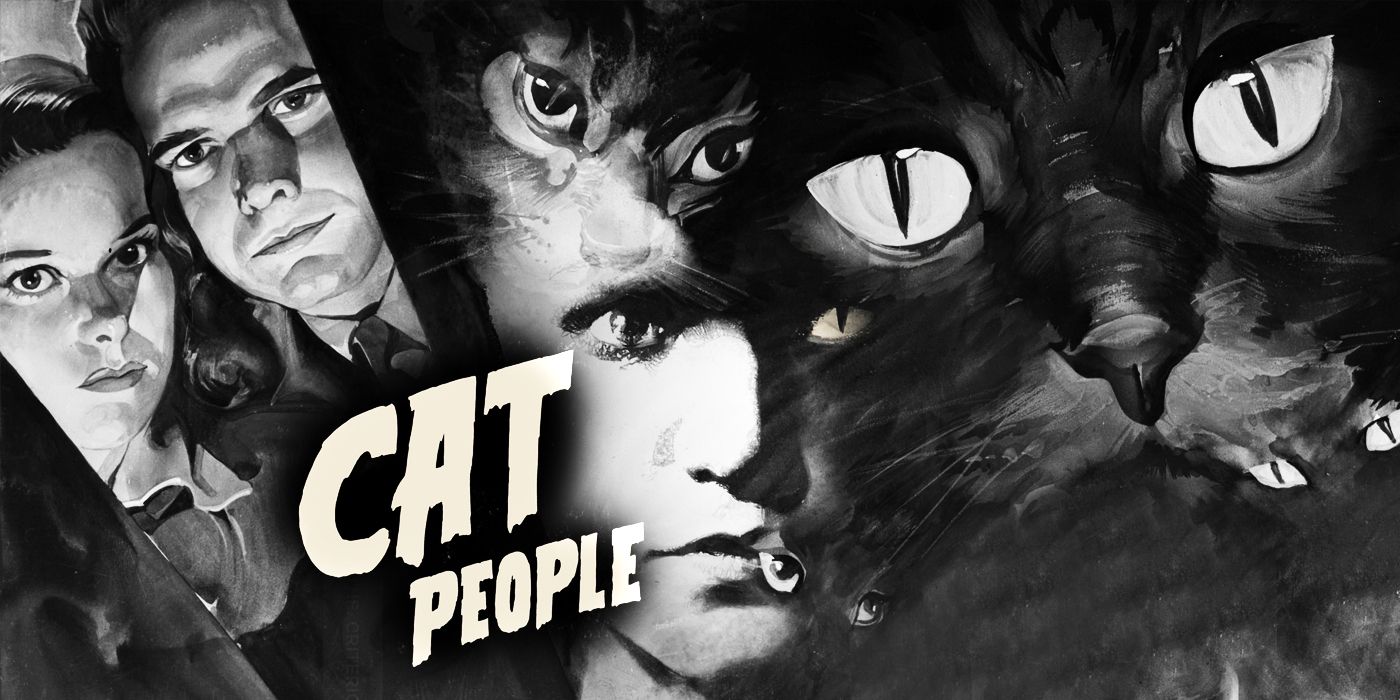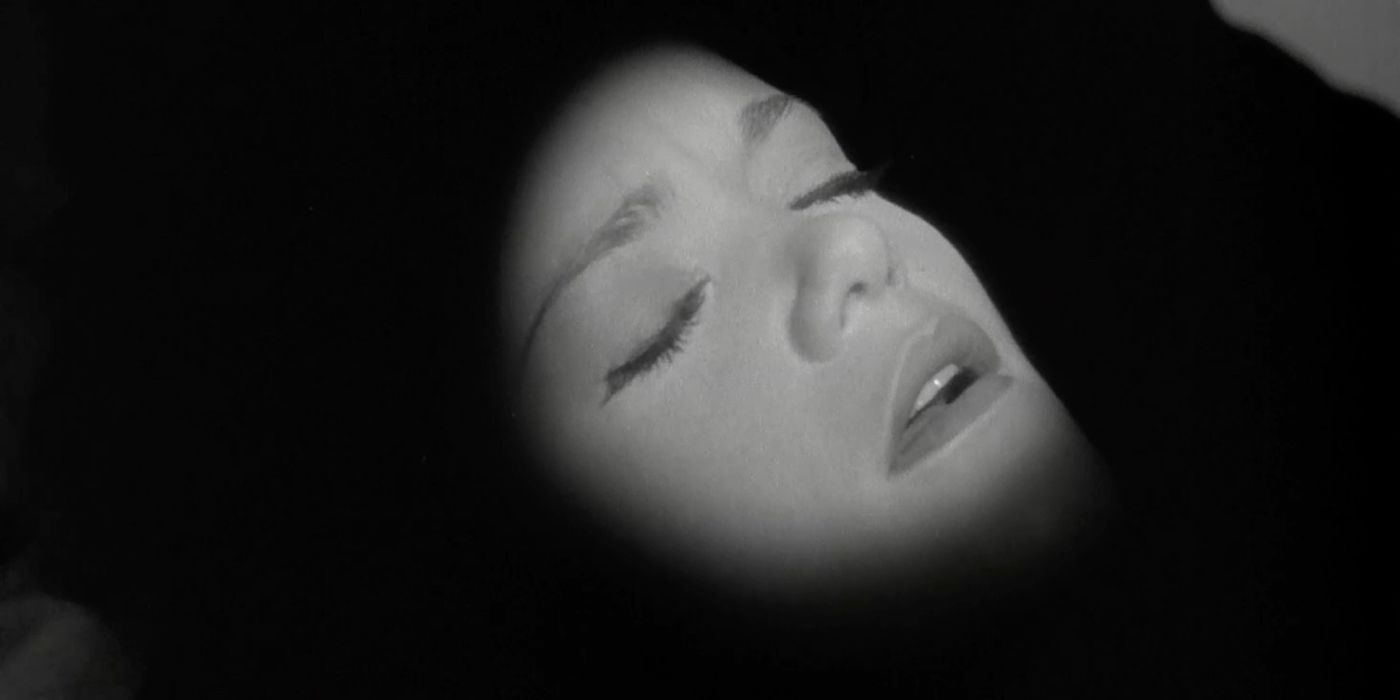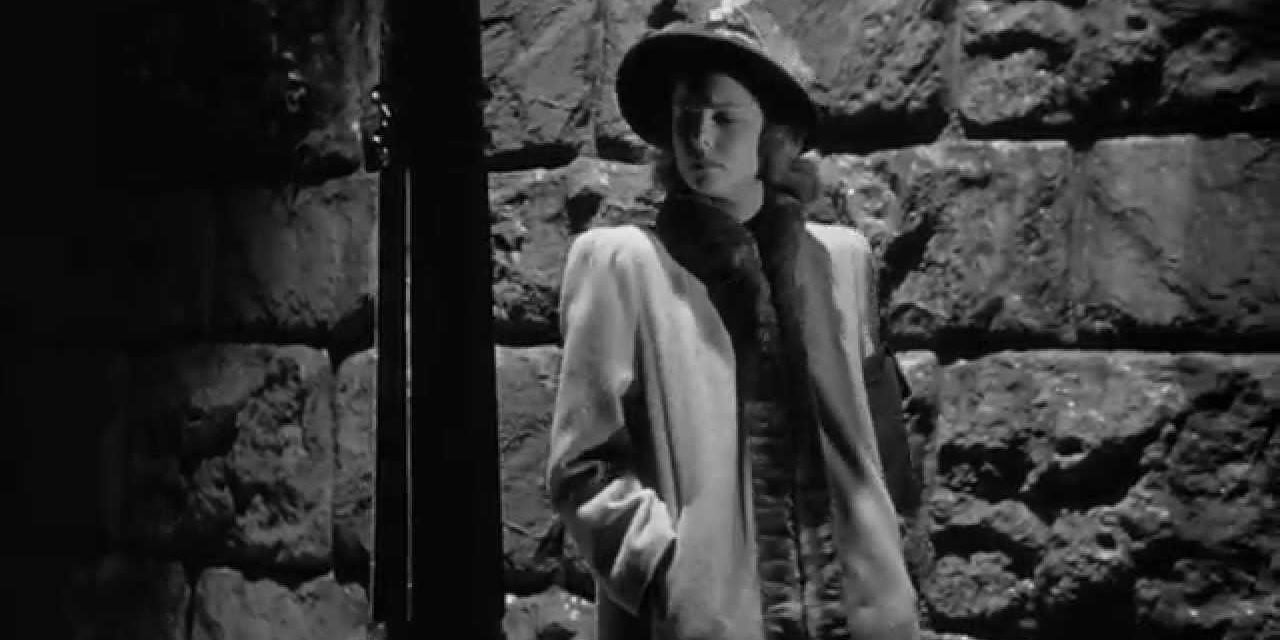Horror isn’t always a genre that ages so well. What was once very frightening can often become silly or goofy over time. This can be particularly true in the realm of Hollywood filmmaking, where the Frankensteins and Draculas of yesterday get more affectionate chuckles than blood-curdling screams these days. The reason for this is simple: tastes change. Makeup and special effects can grow just as dated as film styles. Despite this, some films manage to stand the test of time by tapping into eternal fears — those things that will always be scary — through creatively unsettling means. One of these films is 1942’s Cat People.
A description of the film’s plot may make it sound like any other cheesy monster fright-fest from yesteryear. An enigmatic Simone Simon plays Irena, a Serbian fashion designer living in New York who is pursued by clueless marine engineer Oliver (Kent Smith). What Ollie doesn’t know is that she holds a dark secret: While in the throes of sexual passion, Irena is unable to stop herself from transforming into a violent predatory feline! In spite of this potentially rote plot, the film was directed with skill by French émigré Jacques Tourneur, who used the film’s tight budget restraints to create a dark, moody thriller with a focus on the psychological. Against all odds, Cat People remains deeply unsettling today, due in large part to Tourneur’s opting to suggest rather than to show.
The film is legendary for its lighting. Val Lewton, the film’s producer, would later be termed “The Man in the Shadows” for his trademark low-key lighting. Frames are often blanketed in shadows, making characters inscrutable silhouettes and settings darkly menacing. This is the film’s primary trick, and helps to elevate the fear of cat people into something much larger and more believable: fear of the unknown. As Oliver and Irena marry, she grows increasingly anxious about what she’s capable of. She genuinely loves Ollie, and fears that she may tear him apart in a frenzy of lust. Eventually going to therapy, she speaks to the doctor about her concerns with her face illuminated by a narrow spotlight. She’s otherwise encircled by a suffocating darkness, making visual the psychological uncertainties that pervade her. She soon becomes suspicious that Ollie may be cheating on her with his coworker Alice (Jane Randolph). One scene follows Alice as she is stalked by Irena through the city in the night. As Alice senses she isn’t alone, the shadowy spaces between the dim streetlamps turn threatening. The cold ambiguity of who — or what — could be creeping in the darkness grows far scarier than Irena herself could ever be.
Just as those things left unseen build fear, that which is seen is carefully composed to create a dark and troubling mood. Though Irena is wisely never shown transforming into a cat, visual hints of her true form surround her. As she first tells her new husband about her anxieties, she stands beneath a painting of angry-looking house cats, visually associating her with the animal. She is framed to look as though the cats could pounce on her at any moment, making them symbols for her fear of impending disaster. As Irena’s mental turmoil slowly destroys her marriage, the couple’s emotional distance from one another is powerfully expressed by shots that accentuate the physical space separating them. One moment of the sort has Oliver standing in the kitchen in the close foreground, pouring a drink for himself. He turns to stare at Irena, who stands in the parlor in the far background, looking mournfully down at the floor. A half-opened cupboard door in the middle of the frame isolates them from each other. In a film about humanoid felines, this scene of remoteness between supposed spouses stands out as one of the most coldly frightening moments.
The sound is no less important than the visuals in developing a sinister atmosphere. The aforementioned street scene between Irene and Alice has the film’s most famous and influential instance of sound. The scene builds a great deal of its tension in the silence of the night, punctuated only by the nervous clacking of the two ladies’ heels on the sidewalk. Just when Alice thinks she’s lost her pursuer, and the muted suspense has reached a climax, a loud hissing noise resembling that of a panther fills the soundtrack. It’s a startlingly effective jump scare, but one that turns out to merely be the sound of a bus braking before Alice, and becoming her deliverance to safety. This is often credited as the birth of the jump scare fake-out cliché in film (with some circles even referring to the trend as the “Lewton Bus” cliché), used in innumerable horror movies since.
All of these elements come together during the film’s most successful sequence, in which Alice takes a dip in an eerie indoor public pool after hours, only to realize Irena may be present. Darkness pervades the deserted pool room as Alice strips into her bathing suit. Suddenly, a monstrous growling can be heard as an inhuman silhouette drifts across a wall behind the stairwell entrance. Sensing danger, Alice dives into the water for cover. The only lighting is the dim, dancing reflection of the water on the ceiling, leaving Alice surrounded by a vignette of shadow. As she looks around from the center of the pool to find the source of the alarming noise, she is filmed from a high angle that emphasizes her vulnerability. Finally, she can’t help but scream in the face of this mysterious threat. Her shrieks echo through the small room to utterly chilling effect. It’s a haunting scene, and yet the viewer is left just as much in the dark about the beast itself as Alice is.
In 1982, Paul Schrader remade Cat People, and in doing so, reaffirmed the original’s success. Schrader’s film throws out all subtlety and suggestion, with ridiculous scenes of Malcolm McDowell prowling around with cat eyes. Despite coming out forty years later, it has aged far worse than Tourneur’s classic, with Schrader failing to realize the earlier director’s most important lesson. It’s not the cat people themselves that are scary, but the atmosphere of creeping, ambiguous fear developed by the filmmaking. In the pitch darkness of its shadows, the off-kilter composition of its angles, and the disquieting implications of its sounds, Tourneur’s film evokes something eerily real about those things we are unable to explain or comprehend about ourselves and the world around us. For that, it remains one of the ultimate horror classics.



